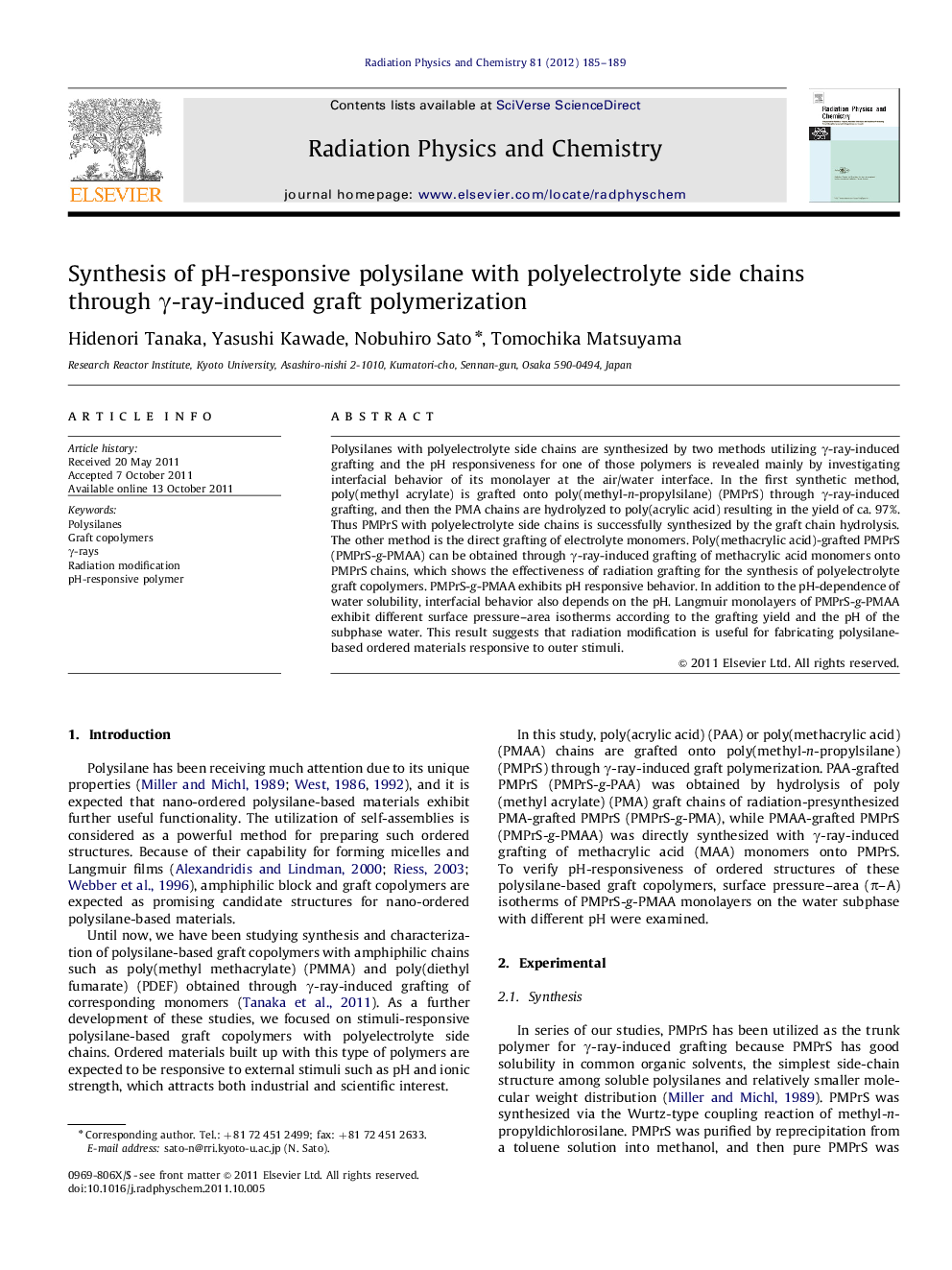| Article ID | Journal | Published Year | Pages | File Type |
|---|---|---|---|---|
| 1886439 | Radiation Physics and Chemistry | 2012 | 5 Pages |
Polysilanes with polyelectrolyte side chains are synthesized by two methods utilizing γ-ray-induced grafting and the pH responsiveness for one of those polymers is revealed mainly by investigating interfacial behavior of its monolayer at the air/water interface. In the first synthetic method, poly(methyl acrylate) is grafted onto poly(methyl-n-propylsilane) (PMPrS) through γ-ray-induced grafting, and then the PMA chains are hydrolyzed to poly(acrylic acid) resulting in the yield of ca. 97%. Thus PMPrS with polyelectrolyte side chains is successfully synthesized by the graft chain hydrolysis. The other method is the direct grafting of electrolyte monomers. Poly(methacrylic acid)-grafted PMPrS (PMPrS-g-PMAA) can be obtained through γ-ray-induced grafting of methacrylic acid monomers onto PMPrS chains, which shows the effectiveness of radiation grafting for the synthesis of polyelectrolyte graft copolymers. PMPrS-g-PMAA exhibits pH responsive behavior. In addition to the pH-dependence of water solubility, interfacial behavior also depends on the pH. Langmuir monolayers of PMPrS-g-PMAA exhibit different surface pressure–area isotherms according to the grafting yield and the pH of the subphase water. This result suggests that radiation modification is useful for fabricating polysilane-based ordered materials responsive to outer stimuli.
► Polysilanes grafted with polyelectrolytes are synthesized by γ-ray-induced grafting. ► The product polymers show different water solubility depending on pH. ► Interfacial behavior of their monolayers is also dependent on pH of subphase water.
